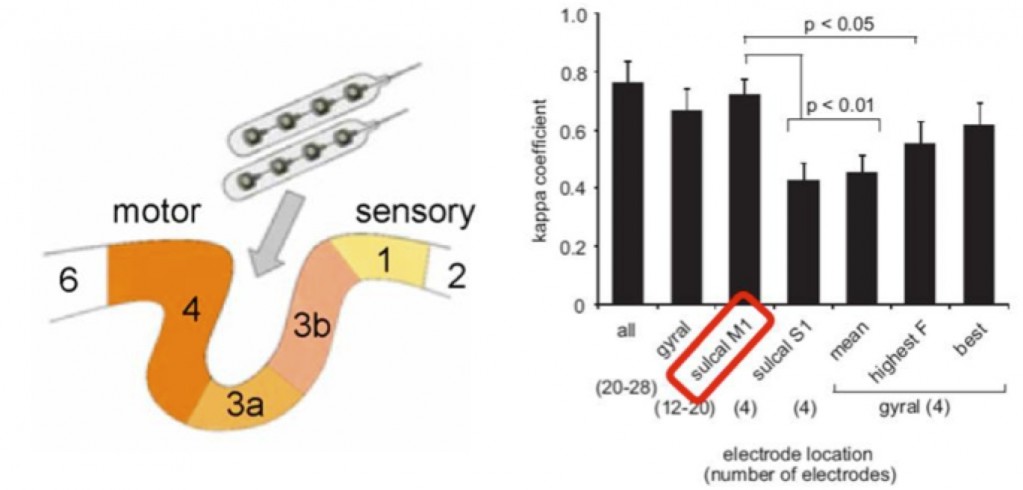Prediction of Motor Commands from Interior Central Sulcus Cortical EEG (ECoG) with Extremely High Accuracy
Abstract
Patients with severe motor dysfunction such as high-level spinal cord injuries and amyotrophic lateral sclerosis (ALS) are sometimes put in a distressful situation in which they are unable to express their intentions or will at all even with any tiny movements of their body and face (total locked-in syndrome). Through the use of brain machine interface (BMI) technology, the stage is being reached where intentional communication and motor function can be restored to quadriplegics, through the operation by thought alone of external equipment (For example, computers, bed and lighting environmental control equipment, communication auxiliary equipment, or a robot hand (electrically-controlled hand prosthesis)). In a partnership between Takufumi Yanagisawa (neurosurgeon/ ATR researcher), Masayuki Hirata (neurosurgeon/ Health department faculty) and others at Osaka University neurosurgery department, and the neuroinformatics lab of Yukiyasu Kamitani in the computational neuroscience department at Advanced Telecommunications Research international institute (ATR), a BMI is being developed which uses brain waves measured from the human cortical surface (Electro-corticogram, ECoG). In the fruits of this basic research, we report for the first time the prediction of motor commands (actions) for use by a BMI, using human cortical EEG measured from the center of sensorymotor cortex, inside a crease called the central sulcus.
There are various brain signals which can be used by a BMI. Among these brain signals are cortical brain waves, or EEG (electrocorticogram, ECoG) from the primary motor area, the last output part of the brain connected to the motor system. Due to advantages such as the stability of the signal and the information content acquired, we think that ECoG may be beneficial (profitable, advantageous) for producing a practically useful BMI.
However, since human primary motor area is located mainly inside a brain crease called the central sulcus, cortical EEG from human primary motor area can only be measured adequately by the implantation of electrodes on the brain surface. In pioneering research, through the cooperation of patients with electrodes implanted in the interior central sulcus (for motor area stimulation as treatment of intractable chronic pain), we measured cortical EEG while subjects performed three actions (Thumb bending; Hand grasping; and elbow bending). Using a machine learning method called support vector machines (SVM), we predicted which action the patient was performing using only cortical EEG from a single action. When we compared prediction accuracy from cortical EEG in the interior central sulcus to accuracy from general cortical EEG, cortical EEG from the primary motor area of the interior central sulcus predicted actions with much higher accuracy. This indicates that soon, by using cortical EEG from the interior central sulcus, we may be able to predict which action will be performed even before the beginning of the real action.
This fundamental (pioneering) research is the world’s first demonstration of motor command prediction with high accuracy using cortical EEG from the interior central sulcus, and suggests the possibility of improved BMI performance by means of electrodes implanted on the cortical surface. Using cortical EEG from the interior central sulcus, we anticipate the development and eventual clinical application of BMI, which is truly becoming the patient’s gospel.

Figure 1: Central Sulcus Electrodes
Human primary motor area (Broddman area 4) lies mainly in the interior central sulcus. Two 4-channel electrodes were implanted inside the central sulcus, and intra-sulcal cortical EEG (electrocordicogram, ECoG) were measured. When motor commands were predicted using cortical EEG from the motor area surface of the interior central sulcus (sulcal M1), as compared to ECoG from the somatosensory surface of the interior central sulcus or motor area surface of the exterior central sulcus (gyral (4)), motor commands (actions) could be predicted with higher accuracy.